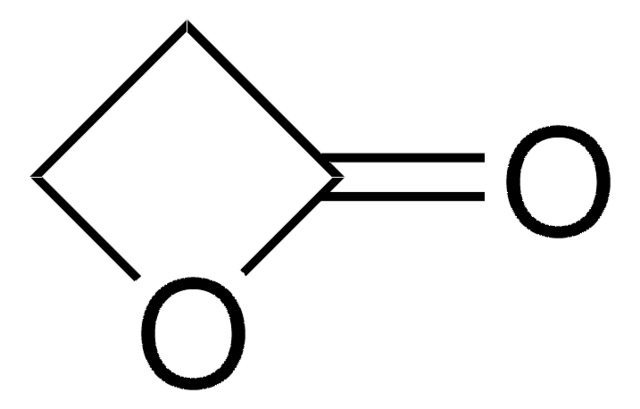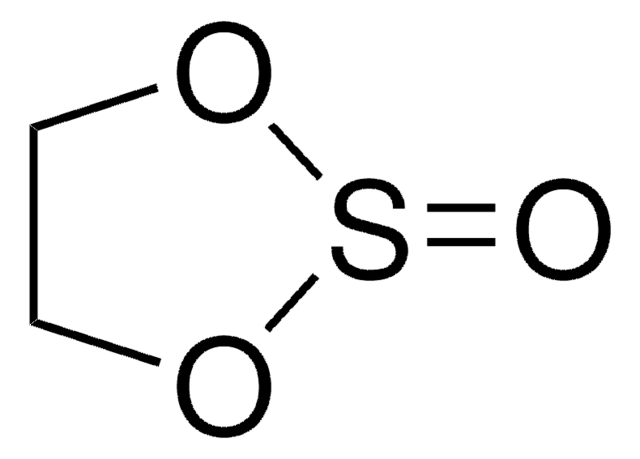291250
1,3-Propanesultone
≥99%
Synonym(s):
3-Hydroxypropanesulfonic acid γ-sultone
About This Item
Recommended Products
assay
≥99%
bp
180 °C/30 mmHg (lit.)
mp
30-33 °C (lit.)
density
1.392 g/mL at 25 °C (lit.)
functional group
sulfonic acid
SMILES string
O=S1(OCCC1)=O
InChI
1S/C3H6O3S/c4-7(5)3-1-2-6-7/h1-3H2
InChI key
FSSPGSAQUIYDCN-UHFFFAOYSA-N
Looking for similar products? Visit Product Comparison Guide
Application
- preparation of poly[2-ethynyl-N-(propylsulfonate)pyridinium betaine], a new ionic conjugated polymer
- preparation of novel poly(4-vinylpyridine) supported acidic ionic liquid catalyst
- preparation of poly((2-(dimethylamino)ethyl methacrylate)-co-3-dimethyl(methacryloyloxyethyl)ammonium propanesulfonate)-coated mesoporous silica nanoparticles
- sulfonation of surface of self-assembled nanoporous silica colloidal crystalline films comprised of 184nm-diameter silica spheres
related product
signalword
Danger
hcodes
Hazard Classifications
Acute Tox. 3 Oral - Acute Tox. 4 Dermal - Carc. 1B - Eye Dam. 1 - Skin Irrit. 2
Storage Class
6.1C - Combustible acute toxic Cat.3 / toxic compounds or compounds which causing chronic effects
wgk_germany
WGK 3
flash_point_f
340.7 °F
flash_point_c
171.5 °C
ppe
Eyeshields, Faceshields, Gloves, type P3 (EN 143) respirator cartridges
Choose from one of the most recent versions:
Already Own This Product?
Find documentation for the products that you have recently purchased in the Document Library.
Customers Also Viewed
Our team of scientists has experience in all areas of research including Life Science, Material Science, Chemical Synthesis, Chromatography, Analytical and many others.
Contact Technical Service
















